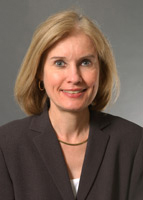Last year, Dennis Quaid’s anguished visage was splashed across the tabloids. Like many Hollywood stories, this one revolved around drugs. But it wasn’t the usual A-list overdose or contraband possession. Instead, Quaid’s newborn twins were mistakenly given two doses of Heparin rather than Hep-lock. The dosage was a thousand times stronger than it should have been, nearly killing the babies. For anyone who’s ever had a doctor handwrite a prescription and marveled at its illegibility, the issues that Quaid faced and which Michael F. Furukawa, an assistant professor in the School of Health Management and Policy at the W. P. Carey School of Business, addresses seem self-evident. But the problem is not just a pharmacist dispensing an incorrect drug or a nurse administering too much of the right one. The health system abounds with medical mistakes. Some have minor effects; some are fatal. Together, they add up to a very real problem.





